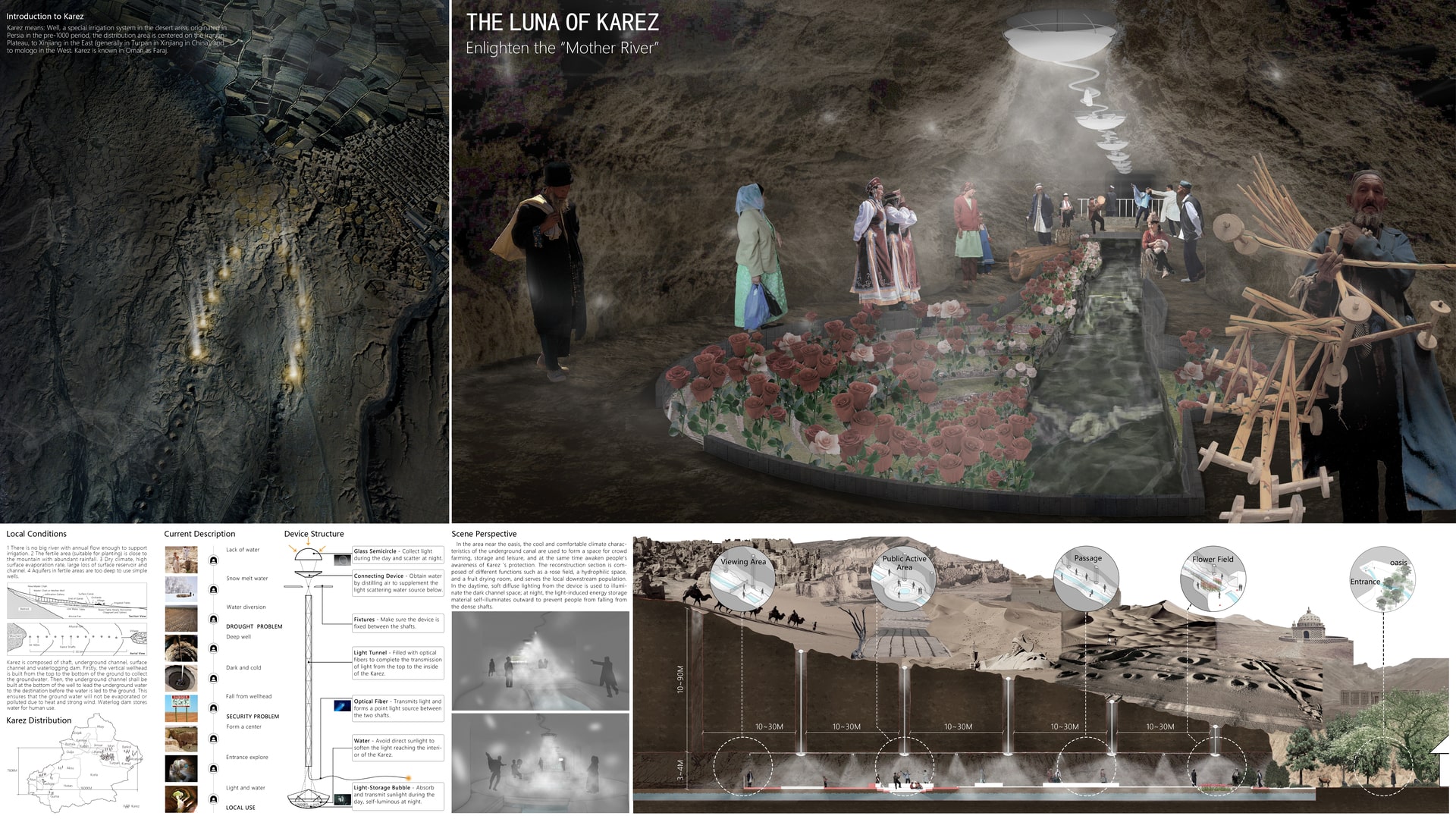Project Description
As a world cultural heritage, Karez is widely distributed in Xinjiang area of China, and it is well protected by the state. In order to protect and restore Karez effectively. Karez underground water conservancy project has been approved by the State Council to be listed in the Sixth Batch of national key cultural relics protection units. The great agricultural cultural heritage can not only continue to be preserved, but also gradually improve the ecological environment of Turpan Basin. Karez was the prerequisite for the early formation of crowds in Xinjiang, which gave birth to the growth of grapes, roses and other crops in the downstream areas. The reason for this is that the Karez area does not have an abundant river with enough annual flow to support irrigation. In arid climate, the surface evaporation rate is high, and the loss of surface reservoir and channel is large. Aquifers in fertile areas are too deep to use simple wells. Karez is composed of four parts: shaft, underground channel, surface channel and waterlogging dam. Firstly, the vertical wellhead is built from the top to the bottom of the ground to collect the groundwater. Then, the underground channel shall be built at the bottom of the well to lead the underground water to the destination before the water is led to the ground. This ensures that the ground water will not be evaporated or polluted due to heat and strong wind. Finally, waterlog dam stores water for human use. However, dim underground culverts regularly require people to enter into overhauling and dredging. In recent decades, the massive excavation of machine wells has caused the groundwater table to drop, and the number of Karez wells is decreasing year by year. The scheme selects a part of the Karez underdrain. In the area near the oasis, the cool and comfortable climate characteristics of the underground canal are used to form a space for crowd farming, storage and leisure, and at the same time awaken people's awareness of Karez 's protection. The reconstruction section is composed of different functions such as a rose field, a hydrophilic space, and a fruit drying room, and serves the local downstream population. In the daytime, soft diffuse lighting from the device is used to illuminate the dark channel space; at night, the light-induced energy storage material self-illuminates outward to prevent people from falling from the dense shafts. In the end, the underground “Mother River” can once again shine the style of the past.
